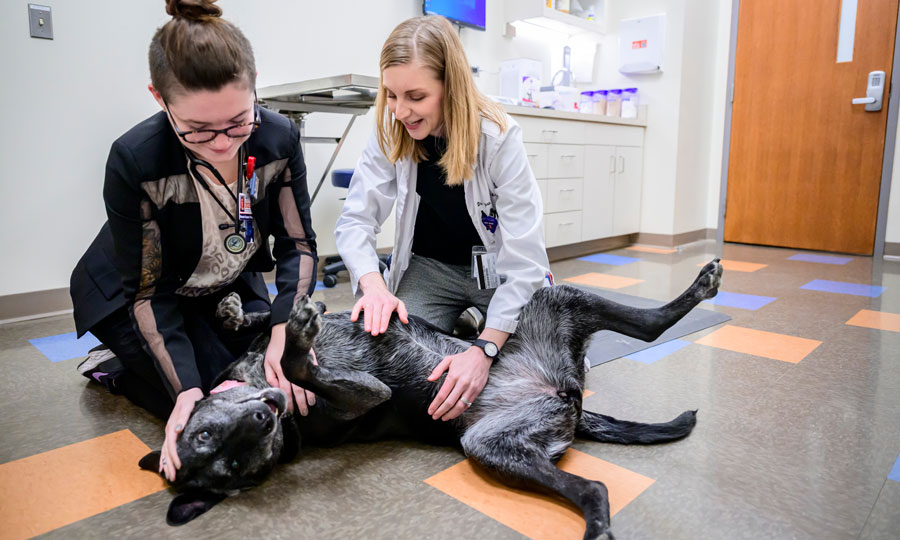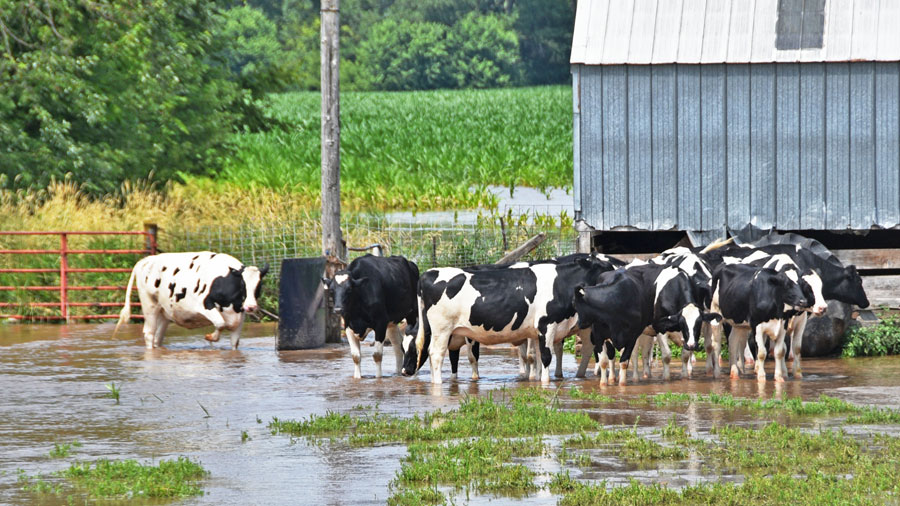Vet Techs Help Animals and People
Veterinary technicians make up a crucial part of the veterinary care team. Not only do they assist veterinarians in hands-on care of animal patients, but many also provide client education, serve various administrative roles, and even specialize in a specific service area.
While veterinary technicians often obtain and hone skills on the job, those working at the University of Illinois Veterinary Teaching Hospital in Urbana have completed either a two-year or a four-year accredited program in veterinary technology. They have also passed the Veterinary Technician National Exam and must maintain their certification or licensure by regularly meeting continuing education requirements.
Veterinary technicians are the backbone of our busy referral hospital, keeping about 20 distinct specialty services running smoothly. The hospital is staffed by about 80 veterinarians and nearly 90 certified veterinary technicians. Together they care for all animal species as well as prepare veterinary students to enter practice.
To showcase this varied yet demanding career, we spoke with two veterinary technicians who have each worked at the College of Veterinary Medicine for more than 20 years, Heather Soder and Alyssa Duncan.
Helping Students, Helping Shelter Animals
Heather Soder, a certified veterinary technician since 1996, has worked in general practice as well as at the Veterinary Teaching Hospital. At the university, she has been part of several service units, including imaging/nuclear medicine, radiation therapy, and small animal surgery. She currently splits her time between shelter medicine and “junior surgery.”
“I help coordinate the junior surgery course,” Soder says, referring to the class where third-year veterinary students learn to perform spay and neuter surgeries.
“I work with area animal shelters to obtain patients and help students with everything from performing physicals exams, bloodwork, and patient prep to gloving, gowning, and draping into surgery.
“When the surgery lab is not being taught, I travel to area shelters with our shelter medicine service, which performs spays and neuters in our mobile surgical unit. I help students sedate, intubate, and anesthetize their patient, prep themselves for surgery, and recover their patients.”
Soder says she has always loved working with animals.
“There are so many things that make being a veterinary technician awesome,” she says. “Working with veterinary students is probably my favorite part. I enjoy sharing what I know, and it’s rewarding to help students grow and become independent.
“Working with shelter animals is another great aspect of the job. It is really wonderful to help animals get healthy and find forever homes.”
Administrative Role Serves People, Animals
![[Alyssa Duncan]](https://vetmed.illinois.edu/wp-content/uploads/2021/04/pc-vettech-duncan2.jpg)
However, after graduating from the Parkland College veterinary technician program, she was very unsure how she wanted to proceed within the field. Then the head of Parkland’s vet tech program called her about an opening at the University of Illinois.
“I interviewed, got the job, and now they’re stuck with me,” she jokes.
Duncan worked in the emergency room and intensive care unit for more than 20 years before transitioning to her current position, patient services coordinator. In this role, she facilitates relationships between technicians, veterinarians, and other staff throughout the hospital.
“I fill the gaps in services where I’m needed, so you just never know where I’m going to be,” she says. “I spend a lot of my time in meetings and serve on several hospital committees.”
Being in an administrative role means Duncan does not work hands-on with animals as often as she once did, but her interests have shifted.
“I worked in the emergency and critical care service all those years. I always thought what I wanted to do was continue to help care for animals and alleviate their suffering,” she says. “Today this [patient services coordinator] is the role I like best. I get to help the people who are caring for the animals instead.”
Advice for Future Veterinary Technicians
Duncan advises anyone thinking about becoming a veterinary technician to get experience in a clinic first.
“This field is very stressful. People’s and animals’ personalities play on emotions on different levels,” she says. “You must know yourself and know your breaking points, so you know when to get help.
“We all go into this job to help animals. And what we sometimes don’t realize is that we’re also helping people, and that is a very important part of veterinary medicine.”
To find out more about a career as a veterinary technician, visit the website of the National Association of Veterinary Technicians in America: navta.net.
By Crystal Munguia

![[Heather Soder]](https://vetmed.illinois.edu/wp-content/uploads/2021/04/pc-vettech-soder.jpg)


